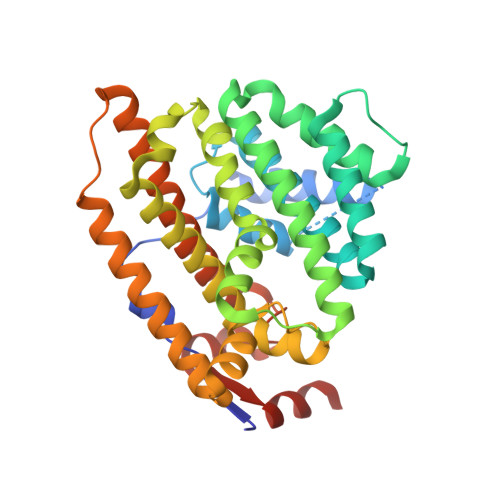Characterization and Crystal Structures of a Cubebol-Producing Sesquiterpene Synthase from Antrodia cinnamomea .
Chen, S.C., Jiang, B.C., Lu, Y.J., Chang, C.H., Wu, T.H., Lin, S.W., Yin, H.W., Lee, T.H., Hsu, C.H.(2023) J Agric Food Chem 71: 13014-13023
- PubMed: 37566786
- DOI: https://doi.org/10.1021/acs.jafc.3c00570
- Primary Citation of Related Structures:
8GR5, 8GR7 - PubMed Abstract:
Antrodia cinnamomea is an endemic species found in Taiwan, known for its medicinal properties in treating various discomforts, including inflammation, diarrhea, abdominal pain, and other diseases. A. cinnamomea contains terpenoids that exhibit numerous bioactivities, making them potential food additives. This discovery piqued our interest in uncovering their biosynthetic pathway. Herein, we conducted functional and structural characterization of a sesquiterpene synthase Cop4 from A. cinnamomea (AcCop4). Through gas chromatography-mass spectrometry analysis, we observed that AcCop4 catalyzes the cyclization of farnesyl pyrophosphate (FPP), primarily producing cubebol. Cubebol is widely used as a long-lasting cooling and refreshing agent in the food industry. The structure of AcCop4, complexed with pyrophosphate and magnesium ions, revealed the closure of the active site facilitated by R311. Interestingly, binding of pyrophosphate and magnesium ions did not cause any significant conformational change in the G1/2 helix of AcCop4, indicating that the apo form is not fully open. This high-resolution structure serves as a solid basis for understanding the biosynthetic mechanism of AcCop4 and supports further production and modification of cubebol for its applications in the food industry.
Organizational Affiliation:
Department of Agricultural Chemistry, National Taiwan University, Taipei 10617, Taiwan.
















